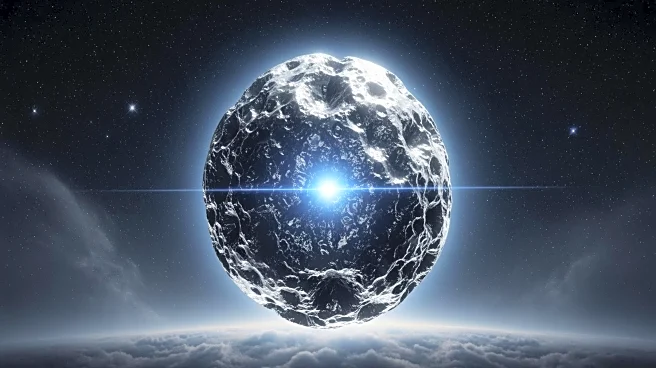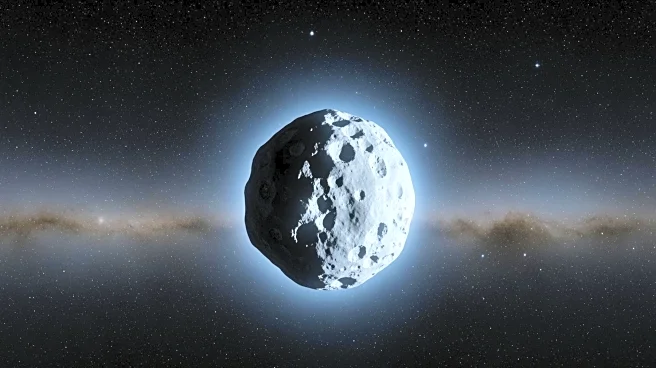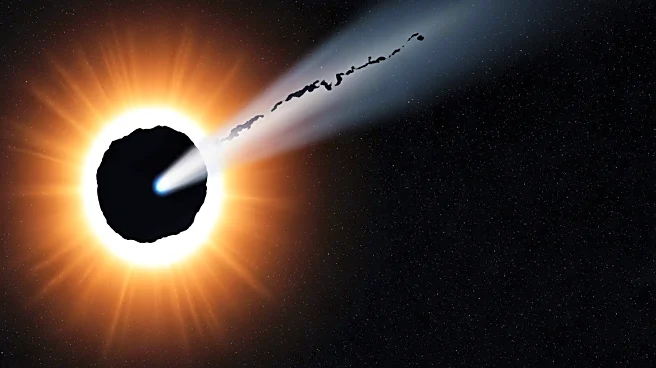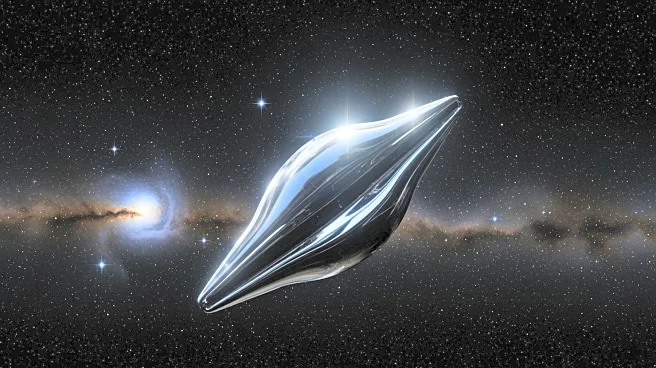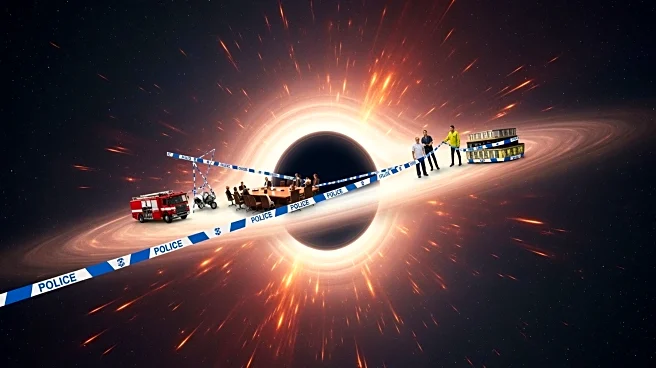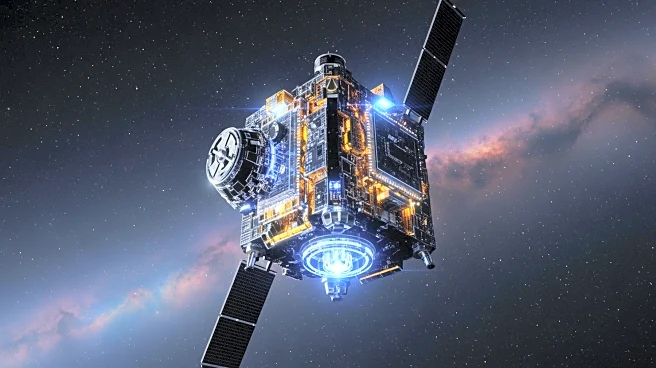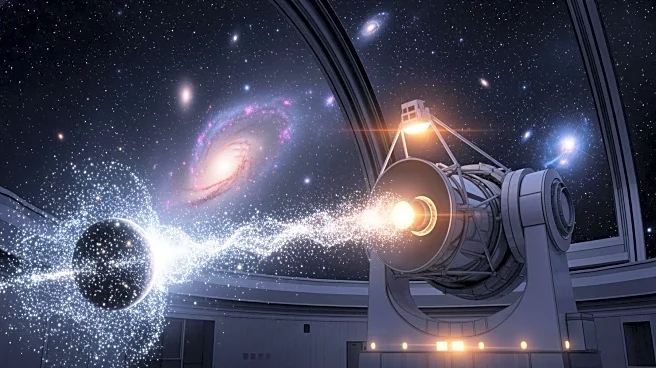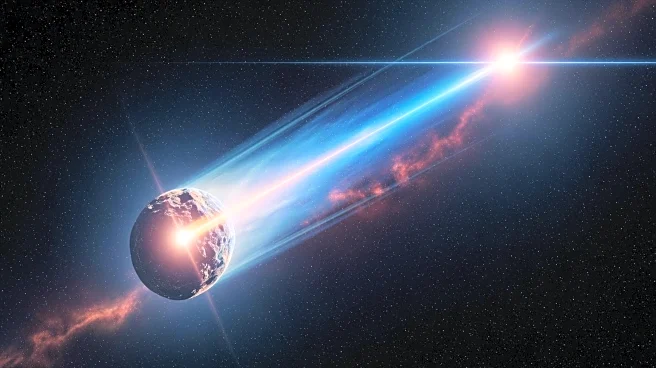What's Happening?
The interstellar object 3I/ATLAS, comparable in size to Manhattan, is emitting a metal alloy never before observed in nature, according to recent findings. Images captured by the Keck II telescope in Hawaii
reveal that the object is releasing a plume containing nickel tetracarbonyl, a compound typically found only in industrial settings. This discovery challenges existing knowledge about comet compositions, as nickel and iron usually appear in similar quantities in known comets. The object, first photographed by the Hubble Space Telescope in July, also lacks a typical cometary tail, instead showing a stream of materials directed towards the Sun. This phenomenon has sparked debate among scientists, with Harvard astrophysicist Dr. Avi Loeb suggesting that the process is reminiscent of industrial manufacturing.
Why It's Important?
The discovery of a naturally occurring nickel alloy in an interstellar object could have significant implications for our understanding of cometary and interstellar chemistry. If the phenomenon is indeed natural, it may suggest previously unknown processes occurring in space, potentially altering theories about the formation and composition of celestial bodies. The lack of a cometary tail and the presence of a directed material stream also raise questions about the object's behavior and origin. These findings could influence future research in astrophysics and the study of interstellar objects, potentially leading to new insights into the materials and processes present in the universe.
What's Next?
The scientific community is eagerly awaiting further data, particularly images from the Mars Reconnaissance Orbiter's HiRISE camera, which captured the object as it passed near Mars. However, the release of these images has been delayed due to a government shutdown affecting NASA's communications department. Once available, these images could provide more detailed information about 3I/ATLAS, helping to clarify its composition and behavior. The ongoing analysis and debate among scientists may lead to new theories or revisions of existing models regarding interstellar objects and their characteristics.
Beyond the Headlines
The unusual findings related to 3I/ATLAS may prompt discussions about the potential for industrial-like processes occurring naturally in space. This could lead to a reevaluation of how scientists interpret data from celestial objects and the methods used to study them. Additionally, the discovery highlights the importance of international collaboration and advanced technology in space exploration, as telescopes and instruments from around the world contribute to our understanding of the universe.
